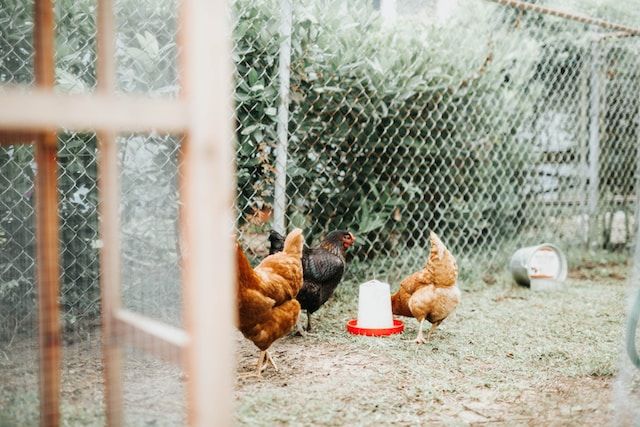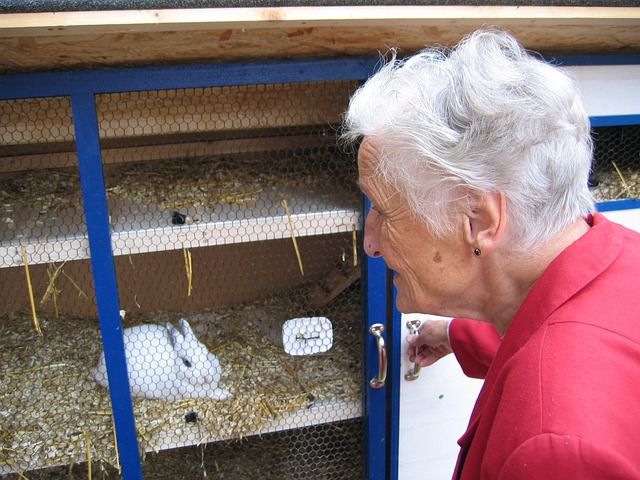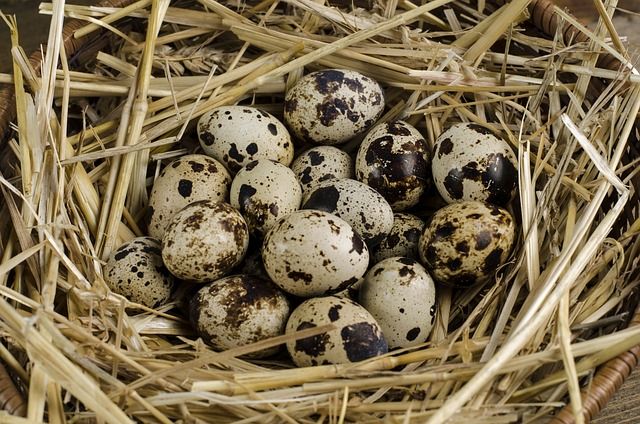The Ultimate Guide to Homegrown Proteins: Raising Backyard Livestock for a Balanced Diet

Hey there, my fellow urban homesteaders! Are you tired of relying on store-bought meat and eggs? Do you wish you could produce your own high-quality proteins right in your backyard? Well, you're in luck! In this comprehensive guide, we'll dive into raising small livestock like chickens, rabbits, and quail in urban settings. We'll cover everything from housing and feed to health concerns and legal considerations. So, let's get started on our journey towards self-sufficiency and a more balanced diet!
Chickens
Choosing the right breed
Every chicken breed has its own unique set of characteristics, so it's essential to pick the right one for your needs and environment. Consider factors like egg production, meat quality, and temperament. Here are some popular backyard chicken breeds:
- Rhode Island Red - A hardy, friendly breed known for its excellent egg production.
- Plymouth Rock - A dual-purpose breed that provides both eggs and meat.
- Leghorn - A prolific egg-layer with a more skittish personality.
Housing requirements
Your chickens will need a safe, comfortable place to call home. Keep these factors in mind when designing their coop and run:
- Space - Aim for at least 3 square feet per chicken inside the coop and 10 square feet per chicken in the outdoor run.
- Ventilation - Proper airflow is crucial for maintaining a healthy environment. Include vents or windows in your coop design to allow for adequate air circulation.
- Security - Ensure your coop and run are predator-proof by using sturdy materials and burying hardware cloth around the perimeter.
- Nesting boxes - Provide at least one nesting box for every four hens.
- Roosts - Chickens need a place to perch at night. Install roosting bars at least 2 feet above the floor of the coop.

Feeding and nutrition
- Feed - Chickens require a balanced diet of protein, grains, and minerals. Purchase a high-quality commercial chicken feed, and supplement with kitchen scraps and garden produce.
- Grit - Chickens need grit to help digest their food. Provide a separate dish of grit for them to access as needed.
- Water - Ensure clean, fresh water is always available.
Health concerns
- Parasites - Regularly check for signs of external parasites like mites and lice. Use diatomaceous earth as a natural treatment option.
- Disease - Monitor your flock for signs of illness, such as lethargy, loss of appetite, or respiratory issues. Consult a veterinarian if you suspect a health problem.
Legal considerations
Check your local ordinances and homeowners association (HOA) rules to ensure you're allowed to keep chickens on your property. Be aware of any restrictions regarding the number of chickens, rooster ownership, and coop placement.
Rabbits
Choosing the right breed
Just like chickens, there are several rabbit breeds to choose from. Some popular choices for backyard meat production include:
- New Zealand White - A large, fast-growing breed known for its high-quality meat.
- Californian - Another large breed with excellent meat production and a calm temperament.
- Silver Fox - A beautiful, heritage breed that is also a good choice for meat and pelts.
Housing requirements
Your rabbits will need a clean, well-ventilated place to live. Consider these factors when creating their living space:
- Hutches - Aim for at least 10 square feet per rabbit, with a separate nesting box for each doe.
- Flooring - Use wire mesh for the hutch floor to allow waste to fall through, but provide a solid resting area to prevent sore hocks.
- Security - Ensure the hutch is predator-proof and raised off the ground.
- Shade - Provide shade to protect your rabbits from excessive heat.

Feeding and nutrition
- Feed - Rabbits require a diet high in fiber. Provide unlimited access to hay, supplemented with a quality rabbit pellet and occasional fresh vegetables.
- Water - Ensure clean, fresh water is always available. Use a water bottle or bowl that is easily accessible and easy to clean.
Health concerns
- Parasites - Check for signs of external parasites like ear mites and fleas. Consult a veterinarian for treatment options.
- Disease - Monitor your rabbits for signs of illness, such as diarrhea, loss of appetite, or discharge from the eyes or nose. Seek veterinary care if you suspect a health issue.
Legal considerations
As with chickens, make sure to check your local ordinances and HOA rules to ensure you're allowed to keep rabbits on your property. Be aware of any restrictions regarding the number of rabbits or housing requirements.

Quail
Choosing the right breed
Some popular quail breeds for backyard meat and egg production include:
- Coturnix (Japanese) Quail - A small, fast-growing breed known for its excellent egg production.
- Bobwhite Quail - A slightly larger breed, often raised for both meat and eggs.
Housing requirements
Quail have slightly different housing needs than chickens and rabbits. Keep these factors in mind when designing their living space:
- Space - Provide at least 1 square foot per quail in an enclosed, predator-proof pen.
- Flooring - Use wire mesh for the floor to allow waste to fall through, but provide a solid resting area to prevent foot injuries.
- Shelter - Include a covered area for protection from the elements.
Feeding and nutrition
- Feed - Quail require a high-protein diet. Provide a game bird feed with at least 24% protein, supplemented with greens and insects.
- Water - Ensure clean, fresh water is always available. Use a shallow dish or a quail-specific waterer to prevent drowning.
Health concerns
- Parasites - Monitor your quail for signs of external parasites like mites and lice. Treat with an approved pesticide or consult a veterinarian for guidance.
- Disease - Keep an eye out for signs of illness, such as lethargy, respiratory issues, or loss of appetite. Seek veterinary care if you suspect a health problem.
Legal considerations
As always, check your local ordinances and HOA rules to ensure you're allowed to keep quail on your property. Be aware of any restrictions regarding the number of quail, housing requirements, or noise regulations.
Conclusion
There you have it, folks! A comprehensive guide to raising chickens, rabbits, and quail for homegrown proteins in an urban setting. By providing proper housing, nutrition, and care, you'll be well on your way to enjoying delicious, sustainable, and ethical meat and eggs right from your backyard.
Remember, it's essential to familiarize yourself with local regulations before embarking on your backyard livestock journey. With a bit of research, planning, and dedication, you can successfully raise small livestock and enjoy the many benefits of homegrown proteins.
Now, get out there and start building your backyard protein paradise! Don't forget to share your experiences with us and visit our other blog posts for more tips and tricks on urban homesteading.

Related articles:
- Backyard Chicken Keeping: Tips for Raising Hens in Rooster-Restricted Areas
- Raising Rabbits for Meat: A Fun and Practical Guide for Small-Space Homesteaders
- The Pros and Cons of Raising Quail for Meat: Is It Right for Your Backyard Farm?
- Breaking Free from the Industrial Food System: How Growing Your Own Food Can Provide True Independence
- From Lawn to Garden: How Planting Food Can Enhance Your Security and Independence
